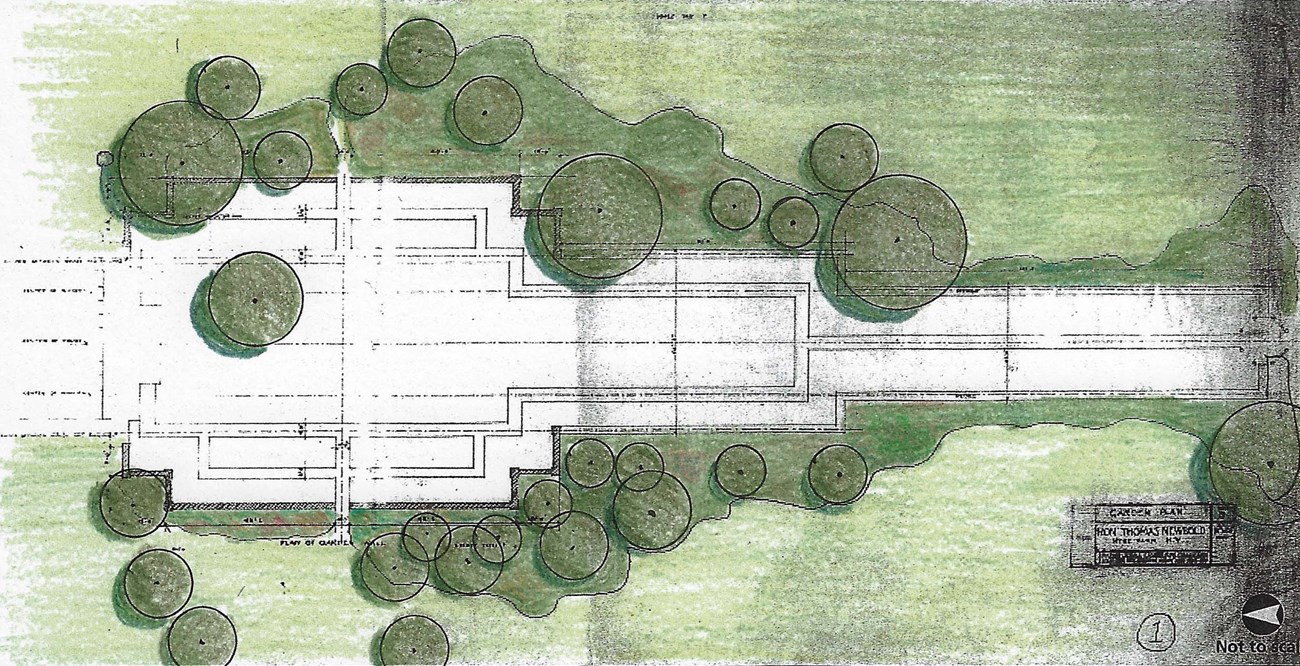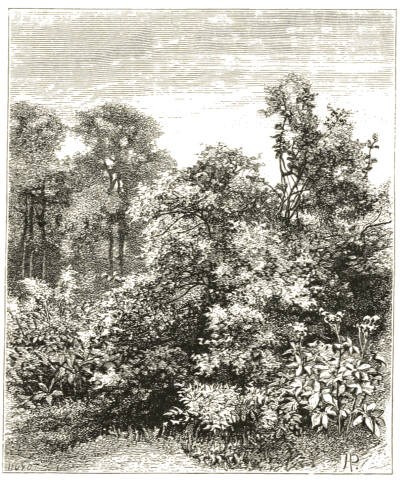
The idea of the wild garden originated in the late nineteenth century as a counterpoint and challenge to the prevailing fashion for excessively formal gardens characterized by geometric patterns of tender plants, standard roses, statuary, and terraced architecture. Codified and popularized by Irish gardener William Robinson (1838-1935), the wild garden introduced fresh gardening principles that embraced and celebrated the use of hardy plants cultivated in naturalized plantings. The wild garden is characterized by a mix of native and exotic plants laid out to mimic patterns observed in the wild landscape. It includes layers of densely planted perennials and groundcovers in natural drifts among trees and hardy shrubs. 
The wild garden is in no way truly wild, allowed to return to a natural state. It is a method of gardening where the plant’s nature and habit of growth dictates the design. Human intervention is required, but undetectable. Based on his first-hand observations of natural habitats in Europe and North America, Robinson shared these principles in magazine articles and his ground-breaking and highly influential book The Wild Garden, published in 1870. His sensibility focused on the “outer parts of pleasure grounds,” with the “fields, woods, and copses . . . and in neglected places in almost every kind of garden.” The wild garden celebrates untidy edges, where the garden blends into a larger landscape. Hardy plants utilized in the wild garden include more than native species. The wild garden also features plants from foreign but temperate climate zones. Many of these are familiar garden standards today, but they were novel for the nineteenth-century. Beatrix Farrand was no stranger to Robinson and his art. She visited Robinson and his home Gravetye Manor in England on several occasions, including 1908 when she photographed his gardens at their peak. Throughout her career, Farrand drew heavily on Robinson’s writings. Farrand’s lifelong associate, Robert Patterson, noted that her work had a “freedom of scale, a subtle softness of line and an unobtrusive asymmetry.” Restoration of the Wild Garden at BellefieldRestoration of the wild garden began in 2022 and is made possible in partnership with the Beatrix Farrand Garden Association, an official philanthropic partner of the National Park Service. The realization of Beatrix Farrand’s wild garden at Bellefield has been a goal since the beginning of the adjacent walled garden’s revival. The original planting details do not survive, but a note identifying the contour and location of the wild garden on a surviving plan in the Farrand archive at UC Berkeley indicate the intent. A team of horticulturists, historians, and National Park Service staff have researched, budgeted, and devised a plan of action to create this garden. The wild garden will display an example of a natural design element that was an important feature of Beatrix Farrand’s design aesthetic. The garden will incorporate the use of native trees, shrubs, and plants as a way of championing Farrand’s early use of these species and connecting her to modern horticultural trends. Ultimately, the wild garden will connect the garden at Bellefield to the larger surrounding landscape and neighboring Home of Franklin D. Roosevelt National Historic Site, both increasing accessibility and improving visibility. 
Planting the wild garden, May 2023. NPS Photo / Frank Futral Sources William Robinson. The Wild Garden: Or, Our Groves and Shrubberies Made Beautiful. Cambridge University Press, 2022. Patrick Taylor, ed. The Oxford Companion to the Garden. Oxford University Press, 2006. Judith B. Tankard. Beatrix Farrand: Private Gardens, Public Landscapes. The Monacelli Press, 2009. |
Last updated: May 26, 2023
